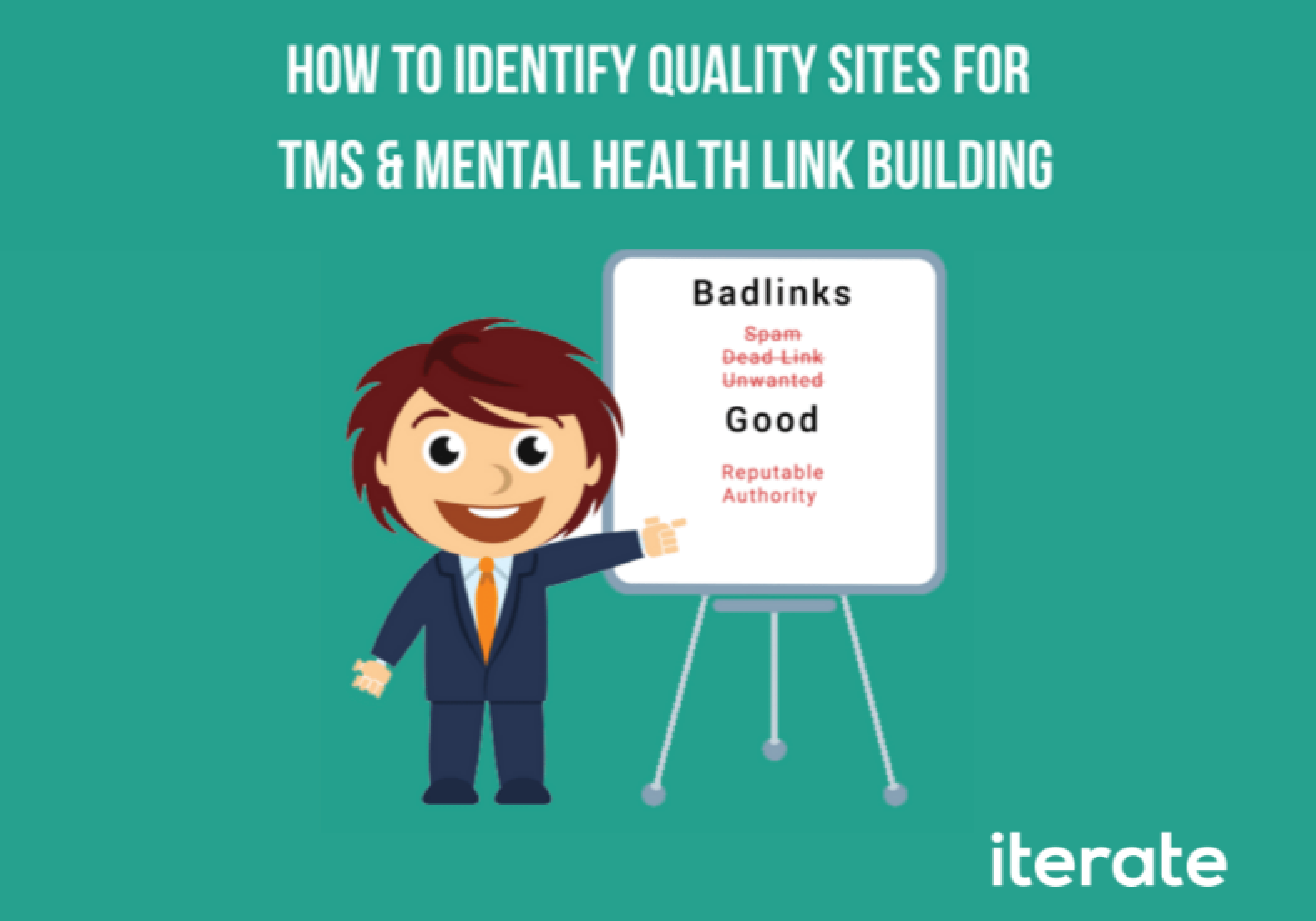The chief strength of digital marketing has long been that we can tell you exactly which half of your marketing dollars are working and what their ROI is. But as digital marketing merges with traditional marketing’s higher value skill-sets (branding and public representation) digital marketing risks losing its long-held strength of palpable and quantifiable results.
As digital strategists it can be tempting to adopt models like perceptual mapping or SWOT analysis, but both of these tools employ subjective reasoning and are always subject to an unhealthy dose of confirmation bias in their execution. Thus your CEO’s SWOT analysis comes complete with pet projects but fails to address persistent blunders – it ends up far different than what your middle-managers would produce, and is thus unlikely to serve any larger organizational purpose. That’s why Niraj Dawar and Charan K. Bagga’s article in Harvard Business Review, A Better Way to Map Brand Strategy, caught my eye. Using their model of Centrality-Distinctiveness (C-D) mapping in order to plot out a brand’s position amidst their competitive landscape gives you a wider strategic perspective – one derived from quantifiable metrics rather than instinct.
The Basics of Centrality-Distinctiveness Maps
Tracking brand growth (digital marketers read: brand mentions and branded search traffic) still fails to capture the magic of how a brand makes us feel as the perspective buyer or end user.
Who are you going to have over for drinks at your house, the guy drinking a pint of Guinness or knocking back a 40 of Milwaukee’s Best? Which would you pay more for, a Sam Adams or some Tecate? The answers to these questions probably jumped right into your mind.
Why? Because both are dependent on gut sensibilities – your reaction to the appeal and positioning of brands – and this is what Centrality and Distinctiveness Maps help us understand. By plotting price on the y-axis and sales volume/market share on the x-axis we can quickly develop a strong framework for understanding where your brand is positioned now – and where you should be moving.
However, when we examine brands with a similar price and market share – say, Sam Adams and Heineken – it’s harder to make this type of decision. The hesitation here is that both brands tend to share brand positioning strategies and target markets.
C-D Maps are powerful because they allow us to take quantifiable metrics, sales volume and/or market share & pricing (derived from the premium people are willing to pay, as established by the framing, or distinctiveness, of a brand in the mind of consumers.
Matching your brand’s business model to its position
Every brand wants to be held in the same regard as BMW. But if Toyota, Honda, and Ford understand how and why they’re competing for the same business thaey have real, actionable insight from a strategic perspective. C-D maps should quickly tell Kia’s CMO that stealing market share from Mazda is a better propositioning then getting it from Cadillac. At the same time Audi knows it doesn’t need to start a pricing war with Lincoln.
What Centrality-Distinctiveness Maps tell us:
The graph can be broken down into 4 parts. Brands are either unconventional, Aspirational, Peripheral, or Mainstream.
Unconventional Brands are distinctive but not central, meaning that they can command high prices through their brand appeal (think Tesla or Mini Coopers) but they just aren’t that appealing to the population at large.
Aspirational Brands are Central and Distinctive and are thus what many marketers and customers aspire to, meaning they have high sales volume and can command high prices because they are held in high regard.
Peripheral Brands are not central and not that distinctive meaning they don’t sell to very many people and they aren’t held in high regard or easily distinguished from each other. (welcome to the graveyard of competing on price)
Mainstream Brands are central but not that distinctive, think the Nissans, Dodges, and Fords of the world, they are appealing deals for much of the population, but don’t leave you with that wow factor, so you’re not going to move into your mom’s do roll in a Dodge drop-top.
Centrality-Distinctiveness Mapping Applied to Digital Marketing
Everyone loves 2X2 charts.. but can this really be a foundation for a complex marketing strategy? My adaptation of C-D Mapping is useful for digital marketing and inbound work because it allows you to merge keyword strength (the only strong insight you have into competitor action) with a slightly subjective list of features on sites within your niche. To illustrate I’ve dissected keyword data for the term “drawer slide,” an elastic product category with both B2B and B2C market forces at play.
Reading the Graph
In my model, attention has been shifted from price and market share (as in the work by Dawar and Bagga) to rankings for a site in a given vertical, total keywords ranking in the top 20, and quality of customer service and/or trust indicators in the eyes of search engines.
I’ve chosen this model specifically because digital marketers are focused on generating qualified leads, augmenting user satisfaction indicators, and growing the digital reach of a brand. At the same time many customers still only focus on palpable keywords.
In the above C-D map:
X axis, or centrality is defined by rankings, with the assumption being, the stronger a brand is the larger its footprint will be in a specific category area.
Y axis, or distinctiveness, is matched with the total number of customer service and trust indicators on a site. (more about this method in the how to section as it is the most )
Z axis, or size of the circles, represents the total number of ranking keywords that a site has, with the supposition being one can quickly assess the overall size and authority of a site from these relative values.
Unconventional Brands are extremely distinctive but not that central, meaning that they may not have a large ranking footprint in a given vertical, but they do offer exceptional customer service and trust indicators, and thus likely are still a relevant and strong competitor.
Aspirational Brands are central and distinctive and are still what we ought to aspire to in terms of a site, meaning they have an extremely large keyword footprint and also offer many great customer service and t
rust indicators.
Peripheral Brands are not central or distinctive meaning they don’t have a very large keyword footprint (likely generating little traffic) and don’t offer very many trust indicators, further damning them to low sales/lead generation and performance in the eyes of consumers.
Mainstream Brands are central but not that distinctive, meaning that they have a large keyword footprint and likely generate massive amounts of traffic, but don’t care to offer much in the way of digital trust and customer service indicators. (Amazon is an easy target to take pot-shots at, but there are thousands of e-commerce B2B’s and corporate websites that fit this description.)
What C-D Mapping for Digital Tells Us
Once you can visualize your position in a market on the map, positioning becomes a strategic choice.
If you are a peripheral brand, you should seek to become unconventional. If you are unconventional, then you ought to figure out how to become aspirational. If you are aspirational, you ought to keep trying new tactics as they emerge in order to stay ahead of the competition. If you are mainstream your business model likely dependent on thin margins, in which case invest in fulfillment or audience growth, or move towards being aspirational by adding high quality customer service to your brands offerings.
Clusters of brands around a certain point indicate intense competition.
If multiple companies are targeting a specific part of the market with equivalent customer service/trust indicators then you know there is a great deal of value to be had.
Quickly glean what trust indicators exist between the best and worst in your industry.
If you need to move towards being unconventional or aspirational you ought to come away with a clear list of actionable.
Brands on the right have higher total sales volume then those on the left.
High proximity to another site indicates close market competition. (steal their market share)
This focus should shift your focus to customer’s and their data, not your own presuppositions or wishes for your business.
As brand centrality (keyword strength) increases, sales volume increase.
As distinctiveness increases (customer service and trust indicators), prices may increase.
Why Be Perceptual When You can be Central?
Ideally this C-D map should motivate people to look more broadly at their marketing efforts, the strength of there performance where it counts, how they are calibrating their physical operations and sales efforts in light of the demand, and the importance of their digital presence to their profitability.
As a heuristic I would assume that most marketers probably make something approximating this as a mental map when communicating and planning strategies for clients. The shortcoming is that it’s complicated to easily explain and you and your client can quickly start speaking past each other, especially when clients are unwilling to move past narrow metrics. This model make the progress of most SEO/Inbound work more apparent and highlights the degree to which clients can ignore customer satisfaction indicators.
Why CMO’s and Small Business Owners Need To Get Their $H!T Together
We’re currently mid-way through a liminal period that will finish playing out over the next decade or so, wherein large brands and companies are starting to take social and organic traffic seriously. at the same time that digital first business are (or should be) scrambling to stay relevant as the wild west of the internet they once profited greatly from becomes more competitive, restricted, brand centric, and costlier to play-in.
While mobile phones, contained platforms, and search engines push digital away from clear cut technical SEO or paid ad spend and towards optimizing user experience (UX), conversion rate (CRO), digital public representation (PR), and branding we move away from tactics and towards more ambiguous skillsets.
Of course, our saving graces are that:
1) digital is still eating traditional everything
2) traditional skills (SEO, Paid, CRO, UX) can be profitably married to branding for massive ROI.
Drawbacks with This Approach (AKA if you think I’m an idiot, read this)
– There are of course several holes in this approach. Chief among them is the reliance on keyword data. While we all know this doesn’t tell the whole story it is unfortunately our only insight into the specifics of where the competition is. At the same time there are indeed weaknesses within my methodology. After all, I did a gross count of keyword strength within a specific vertical, rather then a weighted one based off of position and keyword traffic estimates.
– Part of the “hard” analysis here as it pertains to search traffic from Keywords is a small slice of all possible traffic generators. Thus, the larger a brand the higher the likelihood that unaccountable factors: traditional sales relationships, powerful social selling sales vehicle, strong advertising on niche platforms, mobilized/efficient sales force, etc could have an undue influence on click-through and thus performance stickiness over-time.
– There is a pretty lofty claim set in the original article about this being the first system that allows brands to accurately assess their position in the mind of consumers. Although some level of technical information assuages the usual pain points of confirmation bias, this still relies on some logical leaps in keyword data (see above) as well as your assessment about which attributes in a given niche contribute to an aspirational tier of customer service and/or trust indicators. (i.e. for my drawer slide example having the phone number clearly listed was a key attribute toward success, given that the target audience was above 35 years old. If we were looking at a vertical targeting millennial, a phone number would be irrelevant, email would be the standard, and SMS texting abilities for customer service would be extremely novel.)
– Distinctiveness here isn’t necessarily a popularity metric, there are legendary brands, the Yugo comes to mind, that are distinct, but because they are perceived as the worst car ever they cannot command a high or good price.
Methodology for Assembling the Graph:
The idea for a digital C-D map is to start with the best competitor and work your way downward or towards your site as you go.
Steps
1) Quantify the centrality value. I took a broad view and searched all keywords involving “drawer slide” for a given companies keyword rankings (MOZ or SEMrush are good tools for this)
2) Quantify each sites Z value. I simply took an overall sites search keyword footprint, again relying on keyword data to get a view of that total amplitude.
3) Assess the distinctiveness of a brand. This is why you begin with the best competitor. Basically go through their site and add up every feature that enriches the user experience as well as all content that does the same while pleasing search engines. I started with what I assumed would be an aspirational brand in this category, Rockler, and then continued to add more features.
Rockler
1) Phone Number Clearly Listed
2) Contact Us/Customer Service Page
3) About Page (that establishes brand story)
4) FAQs
5) Customer Login Page
6) Store Finder/Physical Locations
7) Customer Testimonials/Ratings
8) Community QA (Cabinet Parts )
9) News/Blog Page
10) Email newsletter
11) Doing Social Media Right
12) High Quality Product Guides (that display company expertise)
13) Explainer Videos
14) Seminars In Store
Rockler itself scored a 13 in the end but I added one more features that Cabinet Parts had on its site in order to make the list have a grand total of 14 features. My guess is that for most industries this list encompasses most of the possible customer service and trust indicators out there, though you could add many more. On another note, as the list ascends the features become more rare.
If you are interested in learning more about this new tool and using it for yourself, stay tuned! We hope to have this tool available for public use in the upcoming weeks.
For Further Reading and Viewing
- https://hbr.org/2015/06/a-better-way-to-map-brand-strategy
- https://www.youtube.com/watch?v=MWrAhsp0gsw
- https://www.youtube.com/watch?v=2NWDj-iQTJo
- http://www.bluebarn.in/better-brand-mapping-strategy/






